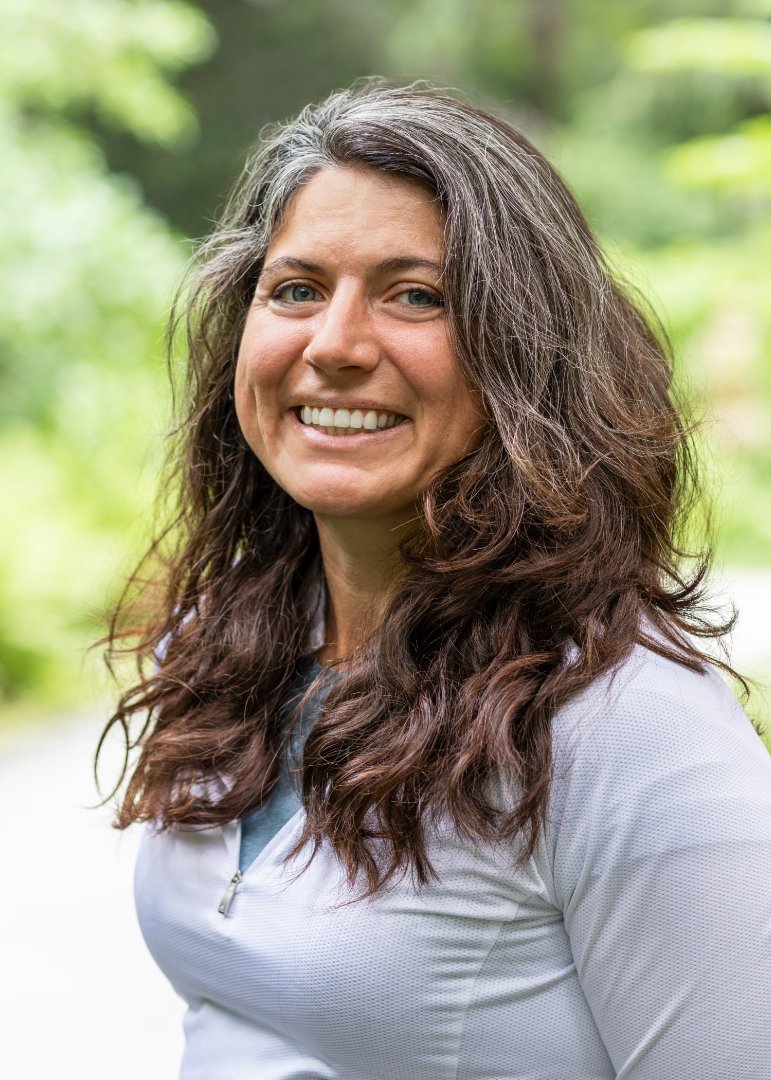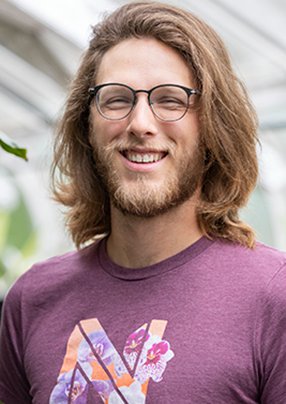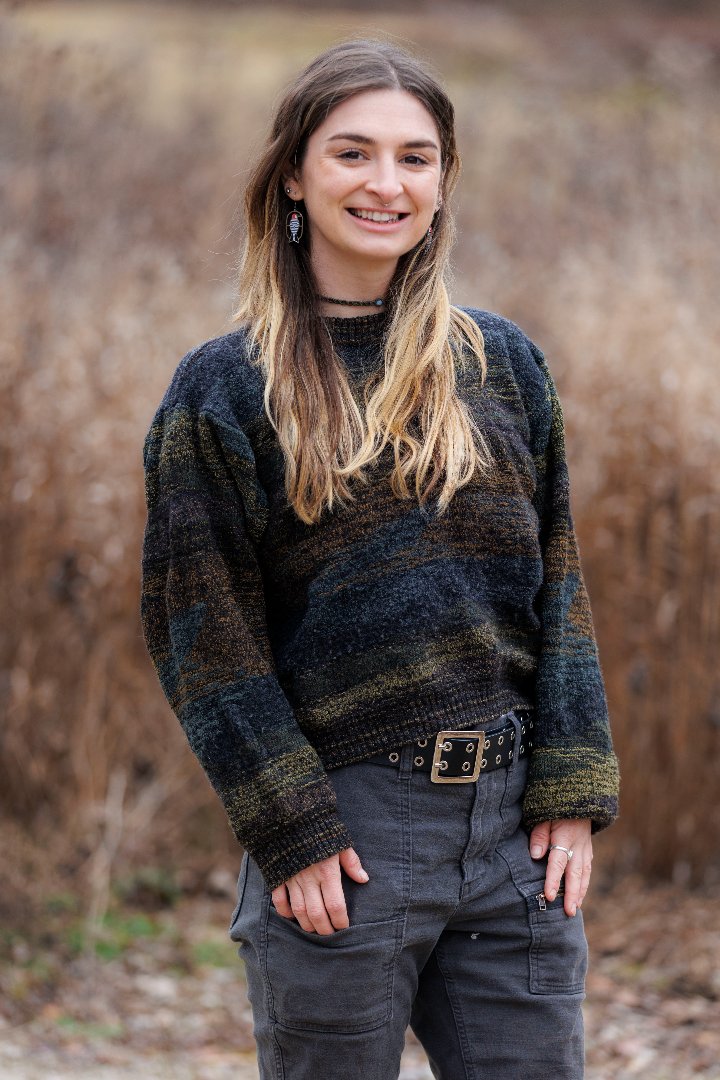/application/files/5116/8988/8623/Bee_on_Flower.jpg
The Virginia B. Fairbanks Art & Nature Park Greening Efforts
Nature has long provided inspiration to artists, and the natural environment is a space for discovery, relaxation, healing, and inspiration for many people as a part of their everyday experience. Our 100-acre refuge is a unique combination of both cultivated and wild landscapes, and we are committed to preserving and sustaining this valuable resource for generations to come. As part of Newfields’ mission to enrich lives through exceptional experiences with art and nature, we have an opportunity to be a responsible steward of this natural space as part of our “living collection.”
The Park has a diverse landscape which includes areas of mesic forest, wetland, prairie, and a 35-acre lake that is connected to the White River. The landscape’s diversity of habitat and proximity to the river bring many opportunities and challenges for conservation and the promotion of biodiversity.
Newfields’ commitment to nature goes beyond human beings to include a wide array of animals and countless numbers of plants. In all, Newfields horticulturists and land managers care for more than 800 genera or plants, 2,000 hybrids and species, and over 600,000 square feet of turf. Current efforts to improve the ecological health of the park include installation of native plants, removal of invasive plants, mitigation of soil erosion, and more.
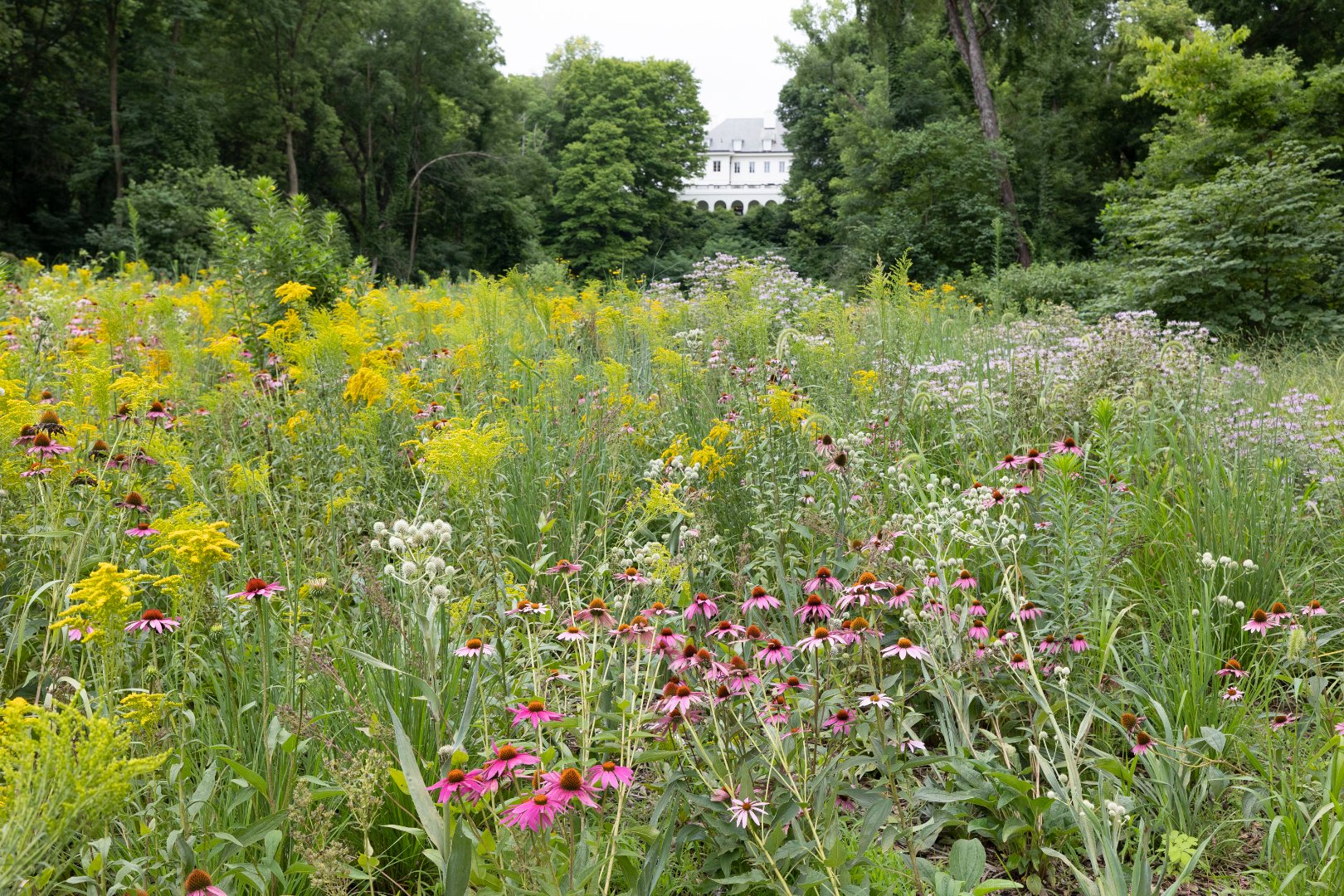
Wild Birds Unlimited Native Pollinator Meadow
Romantically positioned as a viewshed which connects the Lilly House to the lake at The Virginia B. Fairbanks Art & Nature Park, the Wild Birds Unlimited Native Pollinator Meadow is a 1.85 acre garden. Composed of more than 80 species of native plants with 48,984 individual plants, it is the largest native pollinator meadow in Indianapolis. Designed by Kevin Tungesvick, Senior Ecologist with Ecologic, and planted in 2021, this meadow has sprung to life in an exceptional display of native plants.
The meadow is made possible through support from local philanthropists and founders of Wild Birds Unlimited, Nancy & Jim Carpenter.
Pollinator Survey
See what all the buzz is about. Newfields is collecting data and we need your help. Data on pollinating insects will help us better understand how they use our campus and learn how to support pollinator diversity in The Garden and The Virginia B. Fairbanks Art & Nature Park.
TAKE SURVEY
Pollinator Support Packet
LEARN MORE

Why native plants?
We are committed to the conservation of native plant species; more than 70,000 individual native plants have been planted in the park since 2004. Native plants are critical to a functioning ecosystem and contribute to soil health and water quality, as well as the conservation of animal species through the provision of food and habitat.
Many native insects have symbiotic relationships with specific native plants, which means a plant species and insect species rely on each other for survival or reproduction (e.g. the Monarch Butterfly and milkweed). Having native plants in the floodplain also improves water quality in the White River and reduces flooding in the river corridor.

Invasive species removal
Invasive plants are introduced species that harm their new environment. These plants often have no natural predators and do not support wildlife or native insect communities. The Virginia B. Fairbanks Art & Nature Park was overtaken by a number of invasive plant species when it was left to naturalize between 1974 and 2004.
A floristic quality assessment by Butler University and a subsequent floral inventory by ecologist Kevin Tungesvick have shown that reclamation efforts are working to improve the flora of the park. More than 42 acres of historic Amur honeysuckle have been removed and replaced with native plants, and park spaces undergo continual maintenance to reduce the emergence of new invasive species growth.
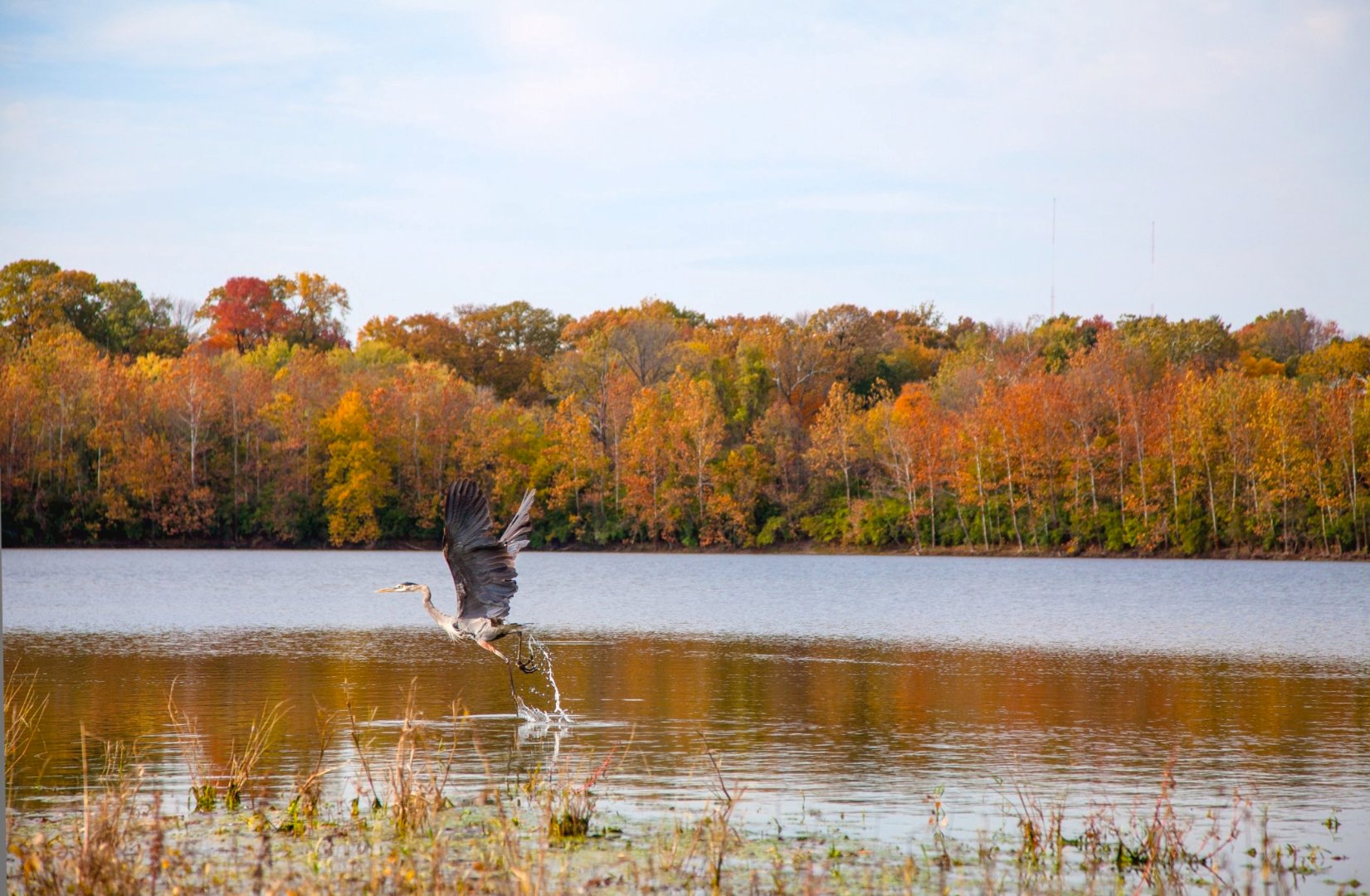
Habitat management
The park’s diverse landscape includes areas of mesic forest, wetland, prairie, and a 35-acre lake that is connected to the White River. These habitats have been optimized for wildlife.
Nest boxes for birds and other animals have been placed throughout the park to mimic the nesting cavities which would be available naturally in an older forest stand, and the lake habitat has been enhanced through the placement of nesting structures and sunning logs for aquatic species.
Keystone plants, such as oaks, which are critical to the health and reproduction of many animals, have been planted throughout the park to provide food for wildlife.
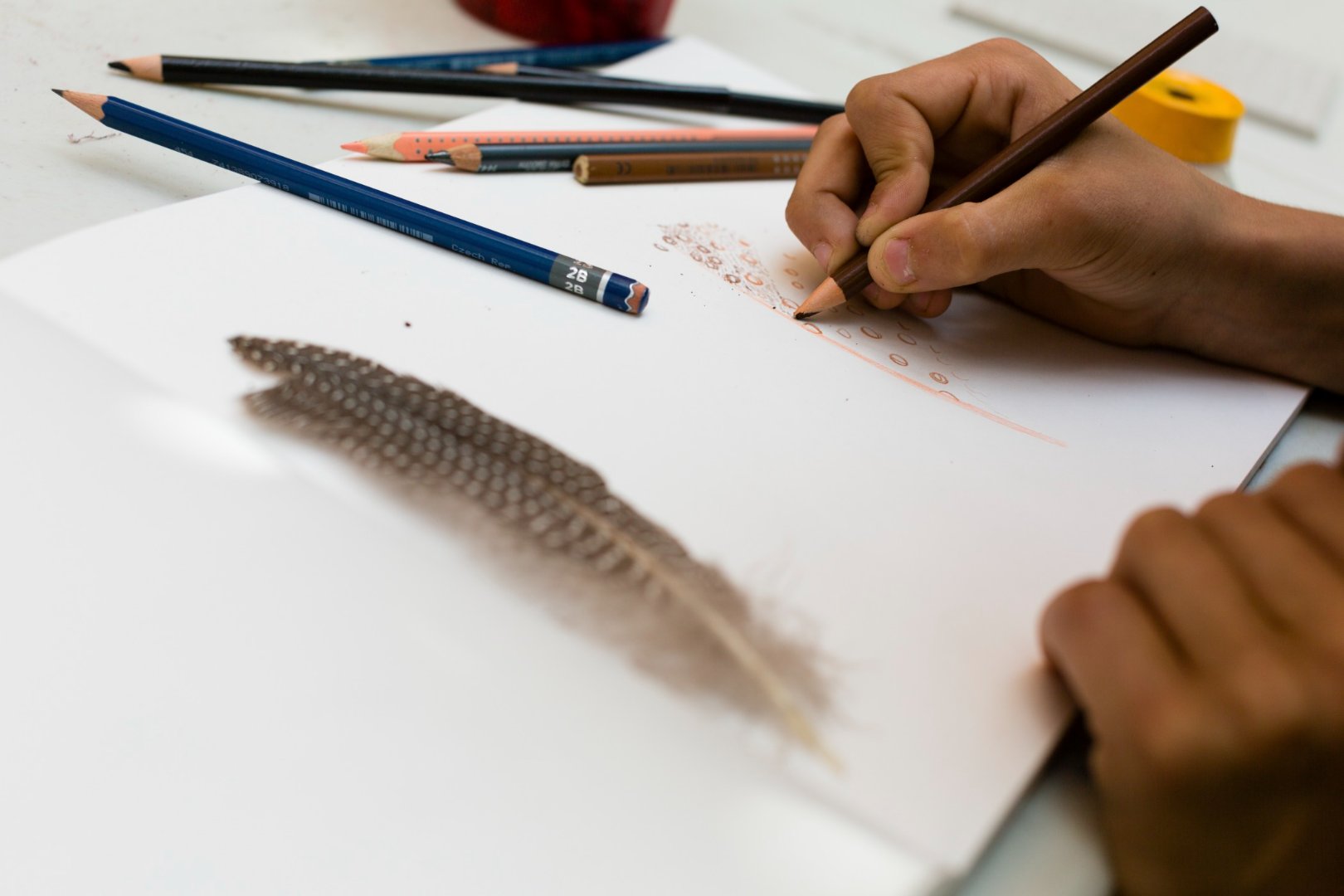
Birdwatching and guide
Get to know all the winged guests of The Virginia B. Fairbanks Art & Nature Park, which is a great place for birdwatching and a corridor for migrating birds. Get tips on where to spot birds around Newfields, learn more about their habitats, and pick up a fun fact or two. Thanks to support from Amos Butler Audubon Society and Wild Birds Unlimited, bird habitats have been optimized through placement of nesting boxes, bird feeders and a nesting platform ideal for a large bird of prey.
We welcome guests to keep track of the birds viewed in park spaces through eBird to help us identify birds as they nest in or travel through the park.
BIRD GUIDE
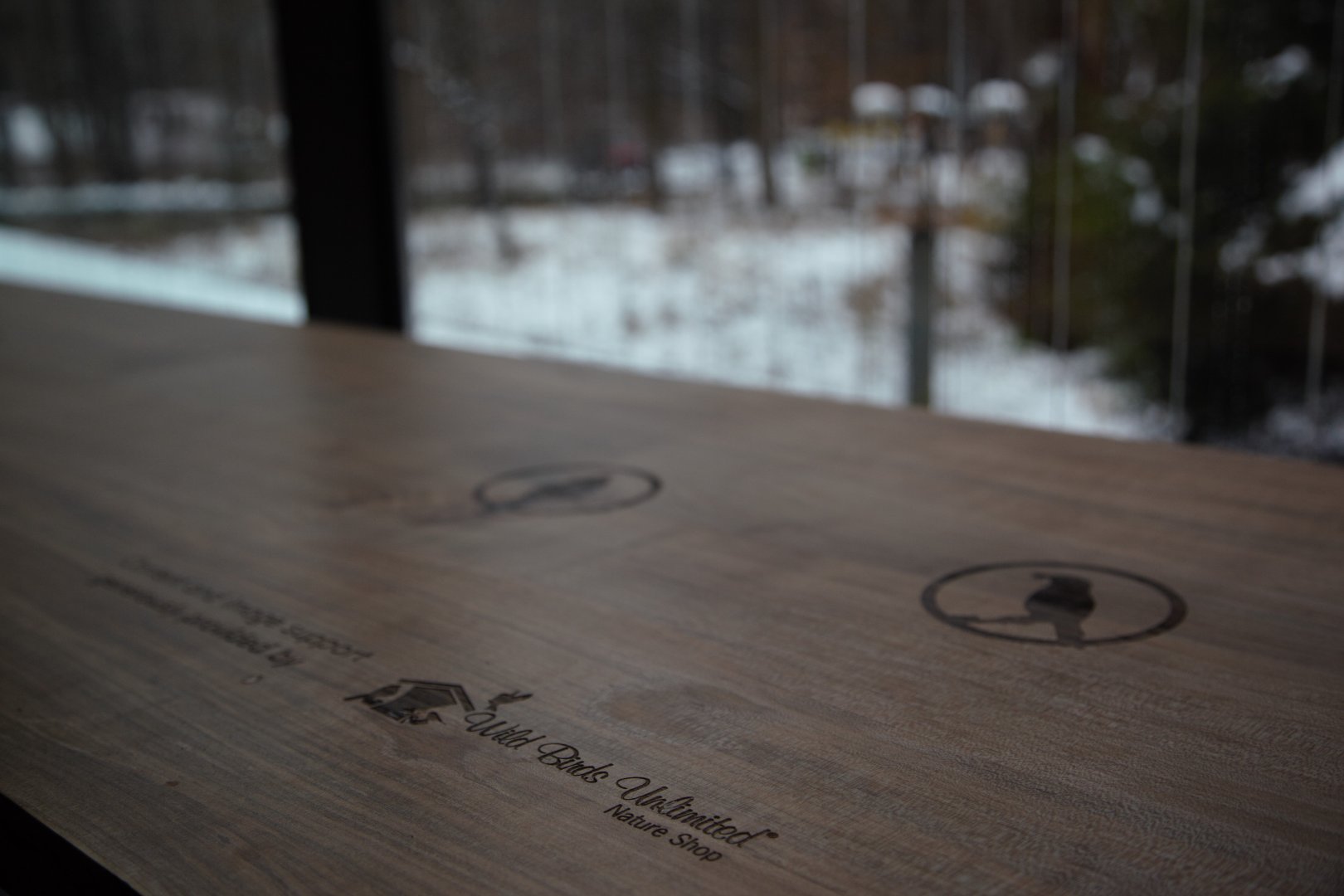
Wood reclamation and canopy replacement
The Virginia B. Fairbanks Art & Nature Park practices wood reclamation, which means we strive to reuse wood from trees and shrubs that have fallen or been removed from the park. For every tree that’s removed in the park, we replace it with at least five understory trees.
Through our partnership with Indy Urban Hardwood, we also mill lumber. This lumber is utilized for many purposes in The Garden and the park. The mulch utilized in the park is sourced entirely onsite, and comes primarily from removed honeysuckle which is chipped into mulch to use for weed suppression and to reduce the amount of bare soil which can lead to erosion.

Erosion mitigation
Stabilizing soil and reducing sediment into the White River are constant challenges due to soil conditions and the proximity of the park to three major bodies of water.
In 2014, Newfields hired Burke Engineering to address erosion along a closed section of trail on the berm between the lake and the White River. As a result, a portion of the berm was reduced, steep slopes of the riverbank were graded, and a geotextile mat was used with native vegetation to stabilize soil and prevent future erosion. Efforts will continue over time to assure continued, safe access to over a mile of riverfront.
Thank you to the Ball Brothers Foundation, Jim and Nancy Carpenter of Wild Birds Unlimited, and Toni and Bob Bader for lead support toward restoring the path around the lake and mitigating erosion. Erosion mitigation and restoration is also supported by the Nina Mason Pulliam Charitable Trust.

Stormwater management
We utilize stormwater features to increase onsite retention and prevent flooding and chemical runoff into the White River. The Edgar and Dorothy Fehnel Entrance, which was completed in 2013, features an ADA accessible ramp with many switchbacks, along which stormwater outfalls capture water in a raingarden composed entirely of native plant species.
This raingarden features native plants with complex root structures which reduce soil erosion and contribute to stormwater uptake and groundwater recharge. Stormwater uptake refers to the use of rainwater by plants. Groundwater recharge refers to the infiltration of rainwater into the aquifer and retention onsite. Both components are critical to the mitigation of soil erosion and pollution of surface water which result from overland flow of rainwater.
A new parking lot designed with sustainability in mind
Newfields is committed to responsibly upgrading our physical spaces to meet the needs of our guests in an environmentally conscientious way. This new 82 spot parking lot, which drains into a large bioretention rain garden at the center, is an important addition to The Virginia B. Fairbanks Art & Nature Park. This project allows us to further provide the local community with access to this spectacular free 100-acre park featuring beautiful art and nature in a safe, accessible way. Special thanks to the Richard M. Fairbanks Foundation and the Indianapolis Garden Club their stewardship in this project. During this process, Newfields has saved and transplanted as many plants as possible to keep organic materials onsite.
Data collection
The Virginia B. Fairbanks Art & Nature Park collects data through ArcGIS, eBird, iNaturalist, and through partnerships with organizations including Butler University and EcoLogic. The collection of data helps to inform the effectiveness of reclamation efforts over time, as well as the remediation of various habitats within the park.
Partnerships
Professional horticulturists, natural resource managers, and preservationists work tirelessly to maintain the essence of the wider ecosystem as integral to Newfields and the surrounding community. We are grateful to our partners for continuously supporting The Virginia B. Fairbanks Art & Nature Park as a public resource for everyone to have the opportunity to enrich their lives through exceptional experiences with art and nature.
Don't see your organization? Send us an email at FairbanksPark@DiscoverNewfields.org to have your organization recognized on this page.
Meet the Team
Lisa Milton, Director of Natural Resources
Cullen Booth, Natural Resource Technician
Paula Robert, Natural Resource Technician
Tom Walters, Natural Resource Technician














